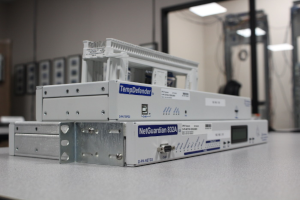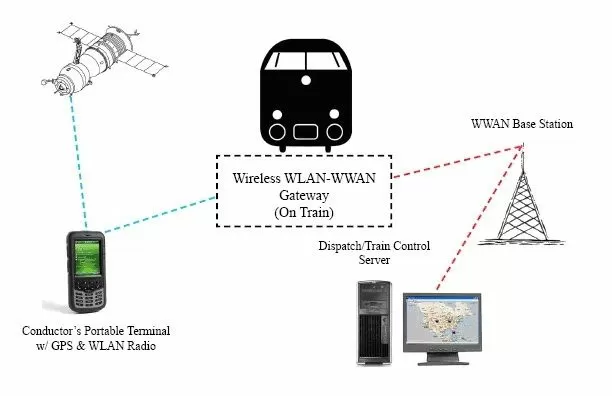Check out our White Paper Series!
A complete library of helpful advice and survival guides for every aspect of system monitoring and control.
1-800-693-0351
Have a specific question? Ask our team of expert engineers and get a specific answer!
Sign up for the next DPS Factory Training!

Whether you're new to our equipment or you've used it for years, DPS factory training is the best way to get more from your monitoring.
Reserve Your Seat TodayPositive Train Control (PTC) has come a long way since its beginnings as a federal mandate in 2008. For years, it was largely seen as a compliance obligation - just something you had to install to avoid trouble with regulators.
But by 2025, the story has changed.
Today, PTC is a necessary part of everyday rail operations. It helps prevent collisions and it keeps trains moving safely and efficiently. Plus, with its modern advancements - such as AI-assisted routing, IoT trackside monitoring, and edge-based diagnostics - PTC has become a key driver of railroad performance.
But there's a growing problem that most operators don't talk about:

Everything in a Positive Train Control system depends on fast, reliable communication. Your locomotives, wayside sensors, signal controllers, and dispatch centers all rely on a constant exchange of real-time data.
But here's the big catch:
If even one part of that chain breaks (if a trackside modem goes down, if a sensor fails silently, or if a power outage knocks out a base station) your train visibility goes away.
And when visibility goes, so does your ability to move trains safely.
That's not just a nuisance. It's a serious safety risk. This means:
PTC does its job brilliantly, but only if every single link in the network is working as expected.
Many railroads deploy monitoring systems to keep an eye on their trackside equipment, hoping to catch failures before they lead to disruption. But in practice, these systems often come up short for a few reasons:
Some equipment vendors advertise "integrated" monitoring features in their sensors or routers. However, those features are often bolted on as an afterthought.
The result is:
It's like trying to monitor your entire network through a tiny keyhole.
PTC networks typically span hundreds - or even thousands - of remote locations. When something breaks, you don't have time to guess.
But with most legacy monitoring, you end up checking multiple interfaces:
You end up reacting to outages instead of preventing them since it's just too hard to see everything at once.
Even worse, many systems only notify you after a total failure has occurred.
There are no warning signs and no trend data, just a "Device offline" notification when it's too late.
By the time you dispatch a technician, the damage is already done. Trains are delayed, revenue is impacted, and your operations team is in firefighting mode.
Picture a different approach where:
This isn't theoretical. One railroad client has already built this exact system. And it's working around the clock to make sure their trains keep moving - safely and on time.
This client operates a large freight rail network in North America. After their initial PTC deployment in 2020, they ran into a familiar problem: equipment failures and communication issues were causing train delays, and their existing monitoring setup wasn't catching the failures early enough.
They needed a smarter, more proactive approach.
To solve this issue, our client followed a few steps.
At every key PTC location - wayside cabinets, signal houses, and communication huts - they installed NetGuardian RTUs. These rugged devices are purpose-built for harsh rail environments and provide full visibility into local systems.
Each RTU monitors:
The NetGuardian can even control remote relays to reset devices, switch backup systems, or toggle cooling fans - all without a truck roll.
With multiple ports (Ethernet, serial, fiber, and even satellite options), these RTUs were installed easily across legacy and modernized sites.
To tie it all together, the client deployed the T/Mon LNX central alarm master system in their Network Operations Center (NOC).
This system collects alarms from every remote site across all supported protocols (SNMP, TL1, Modbus, and even proprietary legacy formats) and presents them in a single dashboard.
With T/Mon, the NOC team can:
Even better, T/Mon automatically logs historical alarm data, which simplifies compliance reporting and trend analysis.
Now, when something starts to go wrong, the team knows about it immediately - not hours later when a train goes dark.
One of the most powerful parts of this client's setup is the real-time notification system.
Instead of waiting for someone to notice an alarm, the system proactively sends multi-channel alerts using:
Each alert includes detailed diagnostic info, so the responding tech knows exactly what to bring and where to go.
Since rolling out their new monitoring architecture, the client has seen major improvements:
And because their system is built on modular hardware that uses open standards, it's already prepped to scale with future expansion.
As PTC continues to evolve, railroads are becoming more dependent on data and automation than ever before.
AI-assisted routing, predictive maintenance, and smart environmental monitoring all require a communication network that's always up and always monitored.
Without some rock-solid monitoring and real-time visibility, you're operating while blind. The risk to your operations and safety only increases.
This railroad client saw that coming, and they acted early to get ahead of the curve.
Now it's your turn to do the same.
You don't need to start from scratch. People like you have done this before. They've made failures that you can now avoid. You just need the right guidance.
Whether you're mid-deployment, operating on legacy equipment, or planning your next upgrade, you can begin improving your monitoring today.
Here's what to do next:
Call 1-800-693-0351
You'll talk to someone who's worked on PTC monitoring projects for major rail operators.
Email sales@dpstele.com
Send a quick summary of your network challenges, and we'll send back tailored info for your environment.
Request a free PTC monitoring consultation
Get specific recommendations, product diagrams, and rollout strategies based on your existing network setup.
Don't wait for your next equipment failure to think about monitoring. Start building the proactive, unified monitoring system that your trains (and your reputation!) depend on.

Andrew Erickson
Andrew Erickson is an Application Engineer at DPS Telecom, a manufacturer of semi-custom remote alarm monitoring systems based in Fresno, California. Andrew brings more than 18 years of experience building site monitoring solutions, developing intuitive user interfaces and documentation, and opt...